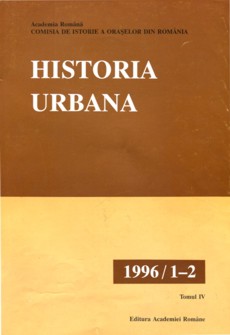Contextul european şi reprezentarea oraşelor în congregaţiile generale din Transilvanu voievodală (secolele XIII-XVI)
The european context and cities representation in the general congregation from voievodal Transylvania (XIIIth-XVIth centuries)
Author(s): Gheorghe BichiceanSubject(s): History
Published by: Editura Academiei Române
Keywords: urban society; medieval cities; congregatio generalis; Transylvania
Summary/Abstract: The emergence and the evolution of cities in Middle Age Europe have determined the constitution of a new political estate (Status - „the Third Estate"-, the privileged position of which imposed the extension of the representation in the Assemblies in the XIII th to XV th centuries, with some differences from one European region to another. In the kingdoms, where the cities were powerful, they monopolized the Representatives Assemblies (e.g. Spain and Flanders), imposing the preservation of their liberties by sanctioning some ..Charters" and „Privileges". In other countries, their presence in the Representatives Assemblies was „meteoricar' or without consistence (e.g. Poland, France and England). The development of the cities and the stratification of the urban society in all Romanian countries present the structure of the „estates” in the political background of the institution of the Representatives Assemblies, definited by the general European phenomenon. Cities representatives tend to manifest themselves in the same way as the nobihty and the clerical estates. The identification of their presence in the Representatives Assemblies (Marea adunare a ţării, Sfatul de obşte) in Valachia and Moldavia is sporadical (in the XVl th and XVII th centuries) and is due to the lack of documentary mentions. In Transylvania, the organisation and the evolution of the institution - Congregatio generalis -, manifests itself as a provincial variety of the Representatives Assemblies. It presents the common characteristics in the representation of the urban patriciate beginning in the XV th century. The consolidation of the cities statutes in the Representatives Assemblies is also relevant by the solidarity with the other privileged estates, sometimes manifested in violent forms (1467). In this context the author is revealing some new information regarding the confirmation of the Căpâlna Union in 1509. Examined in its European context, the reprezentation of the Transylvanian cities have some common characteristics and also some particular features concerning the election of the deputies, their number and their attributions, the modality of convocation and the obligation of participation under the pressure of a penalty. The constitution of a permanent „representative” which was supposed to function during the intervals between Estates Assemblies is obvious, too. The peculiarity of the structure and the evolution becomes evident only by the way of the fundamental correspondence to European Representative and Parliamentary Institutions.
Journal: Historia Urbana
- Issue Year: IV/1996
- Issue No: 1+2
- Page Range: 25-37
- Page Count: 13
- Language: Romanian
- Content File-PDF

